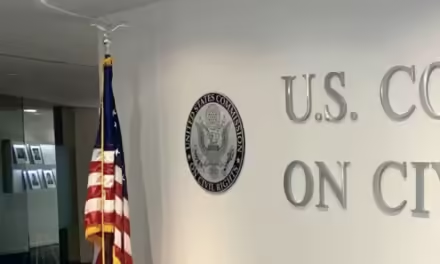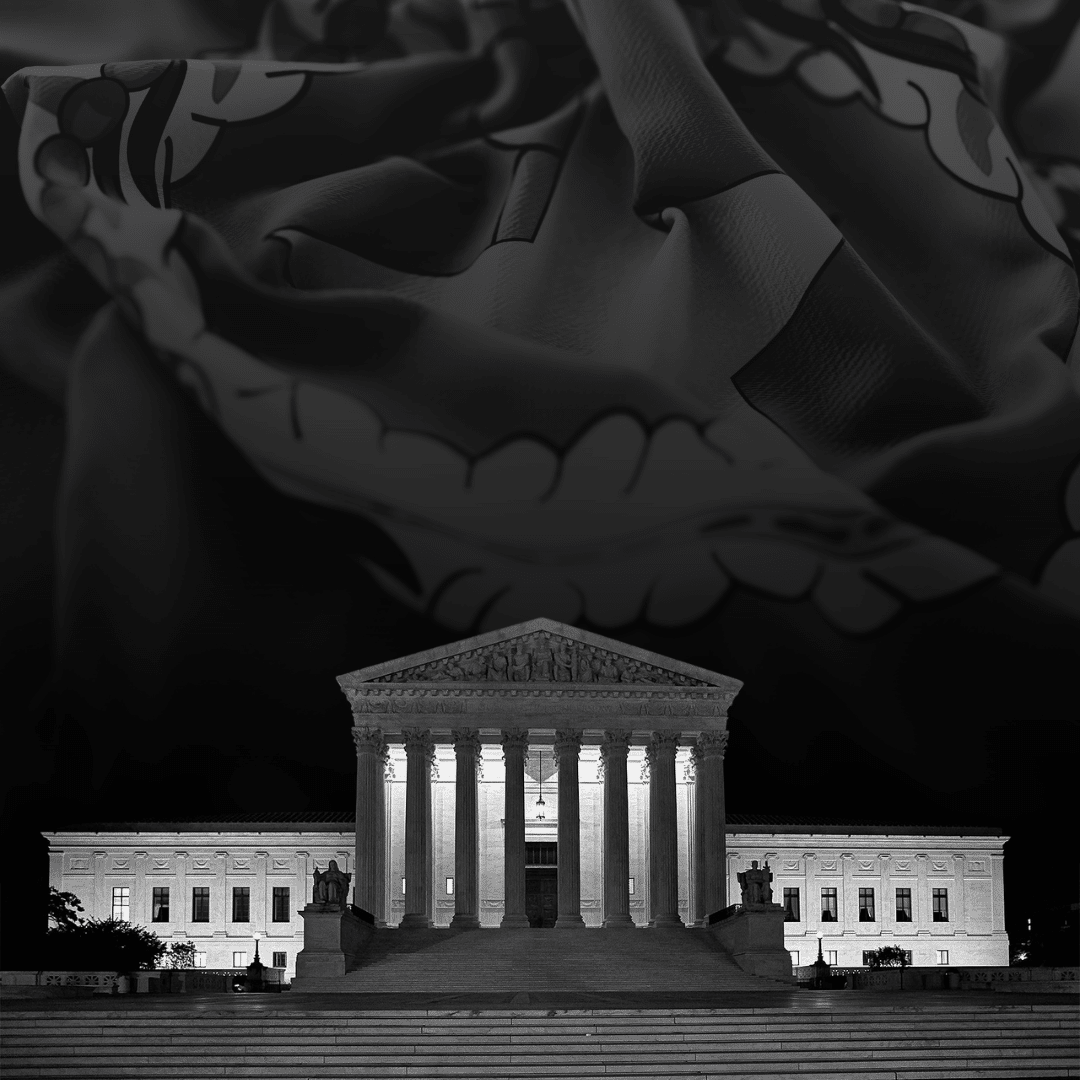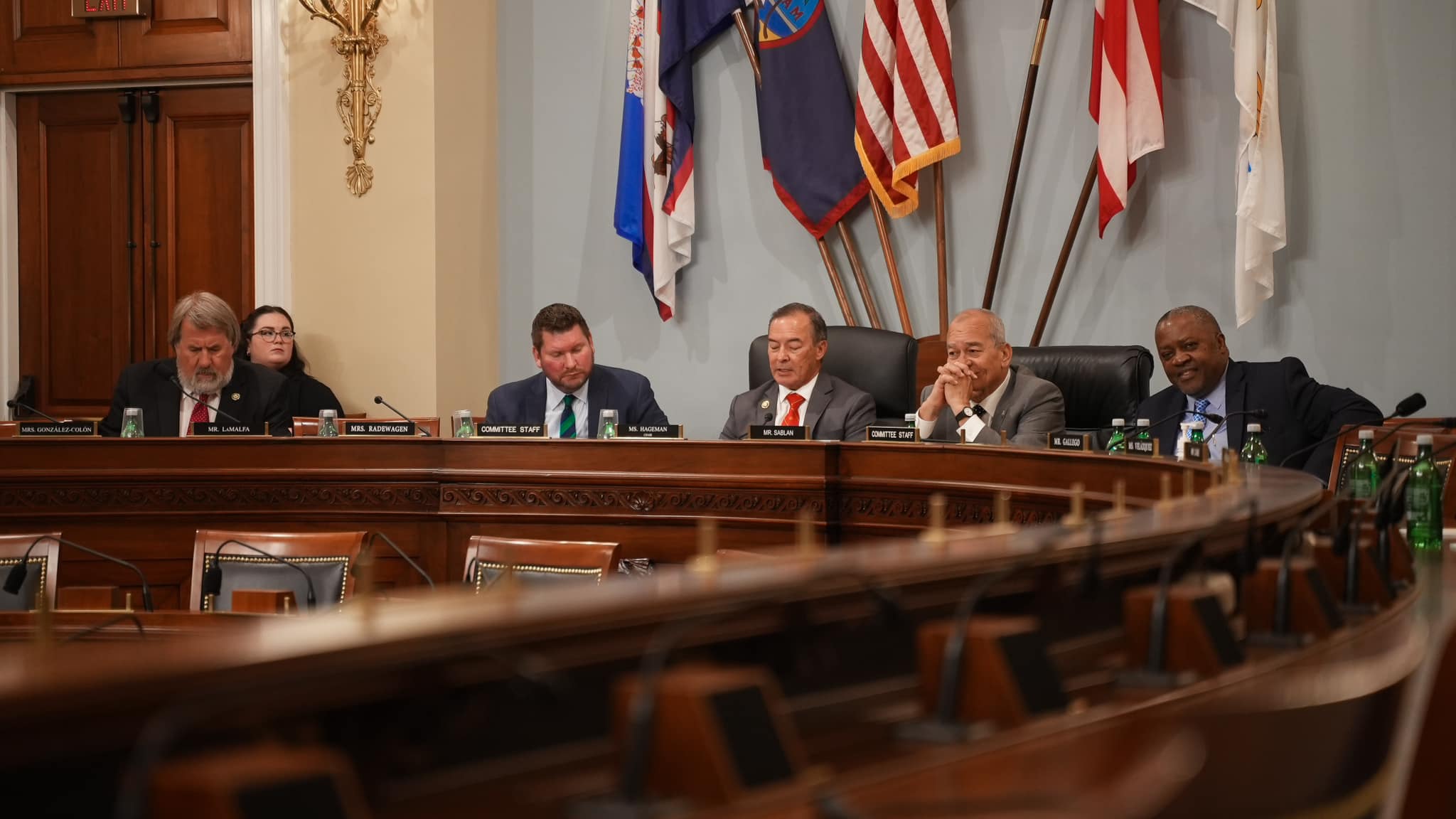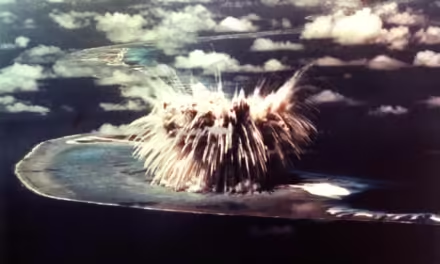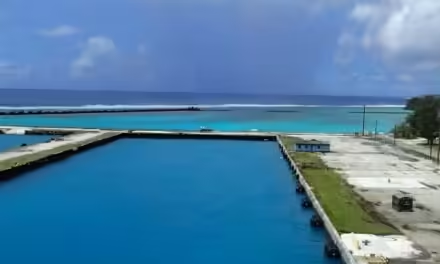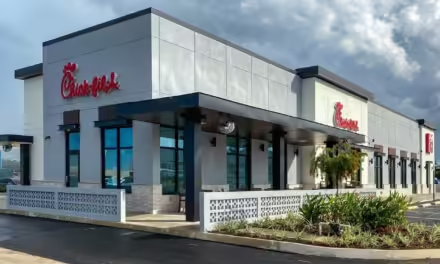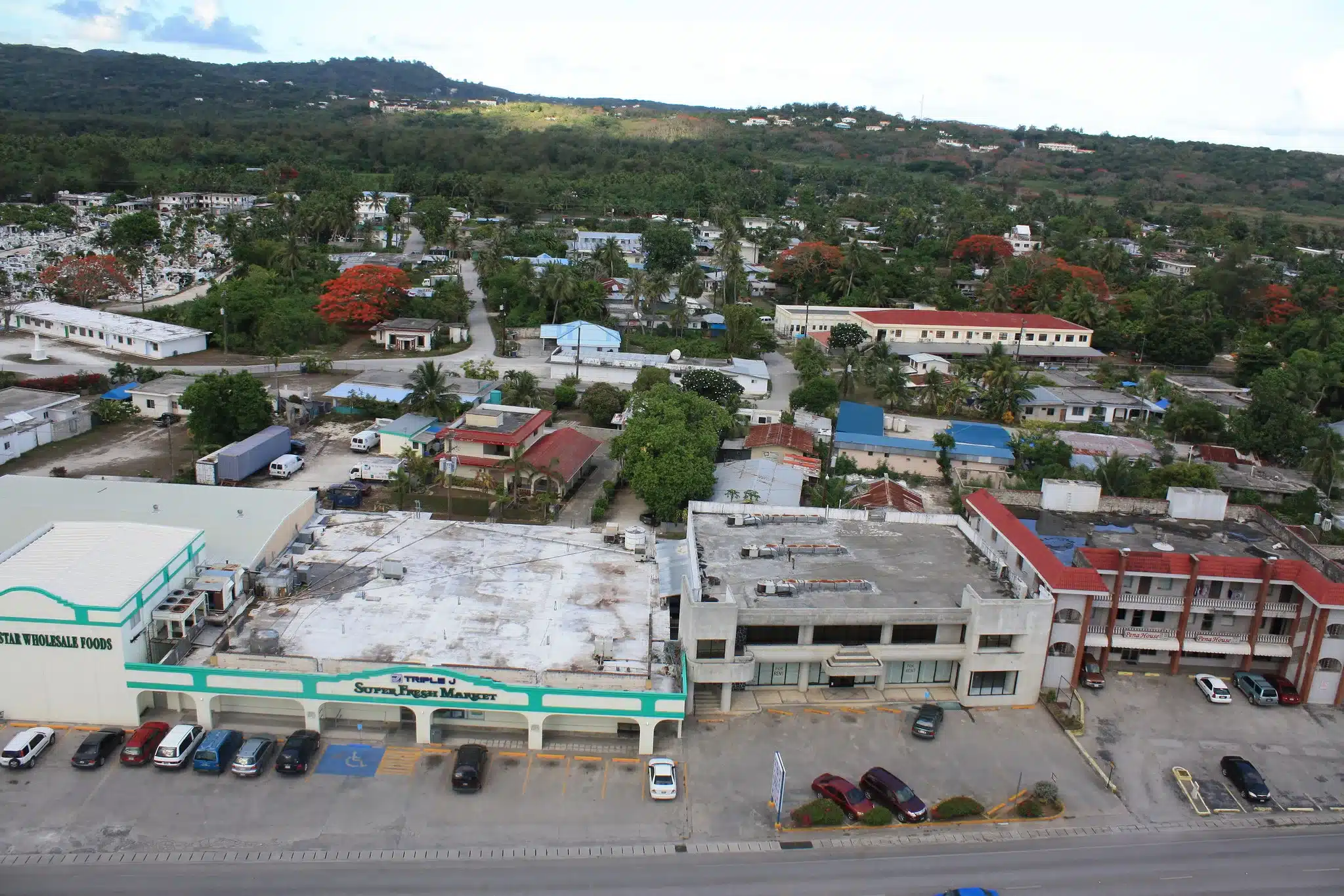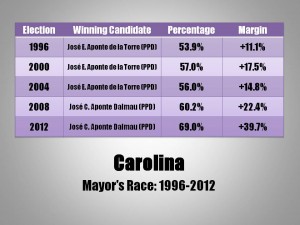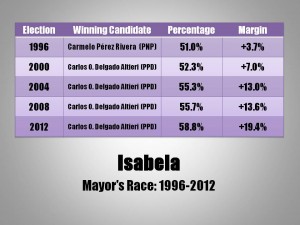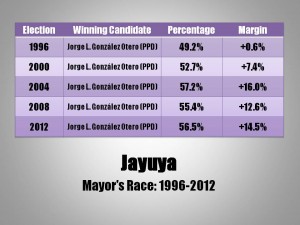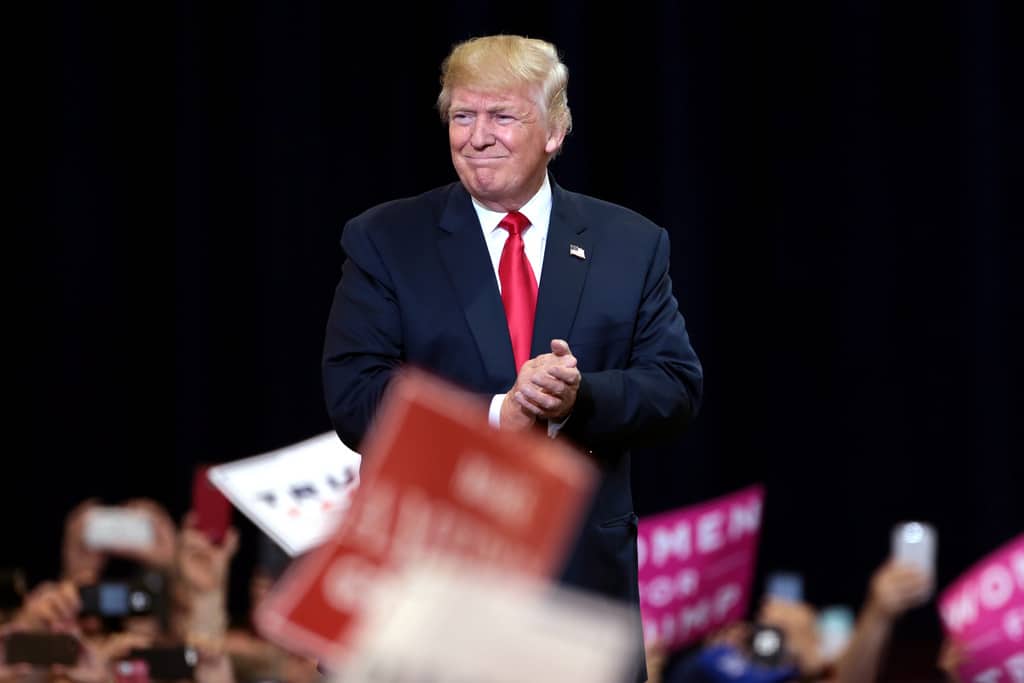By: PR Pundit
Last week we began our analysis of the sixteen (16) Municipalities that have voted for the gubernatorial candidate that won the statewide election and ultimately elected Governor of Puerto Rico, which we have labeled Purple Municipalities.
Today we continue with that analysis with the Municipalities of Carolina, Isabela, and Jayuya.
Carolina
Governor Race:
NPP 1968, 1976, 1980, 1984, 1988, 1992, 1996, 2008
PPD 1972, 2000, 2004, 2012
Resident Commissioner Race:
NPP 1968, 1976, 1980, 1984, 1988, 1992, 1996, 2008
PPD 1972, 2000, 2004, 2012
Mayor’s Race:
NPP 1968, 1976, 1984
PPD 1972, 1984, 1988, 1992, 1996, 2000, 2004, 2008, 2012
Just like San Juan, Carolina has been slowly shifting from a New Progressive stronghold to a Toss-Up Municipality. NPP Gubernatorial candidates won every election in Carolina from 1968 to 1996, with the exception of 1972. The NPP also controlled the 40th Representative District (Isla Verde) for forty four years (from 1968 to 2012), and it had strong footing in the other two Representative Districts (38th and 39th) that include Carolina.
There are three factors that have helped the Popular Democratic Party catch up to the NPP in Carolina and those are: 1) the strong municipal machine established by late Mayor José Aponte de la Torre (1985-2006); 2) the constant bickering and internal Party divisions the NPP has suffered in Carolina since 1988; and the migration trend of people leaving the cities of the Metropolitan Area to locate to peripheral Municipalities, such as Canóvanas, Río Grande, and Gurabo.
Aponte de la Torre won the Mayor’s race in Carolina as a result of the NPP division with Hernán Padilla’s Renovation Party. If you add the votes received by the Renovation candidate, then NPP Mayor Roberto Iglesias would have easily been re-elected to a third term. Since then, Aponte de la Torre solidified his position and established one of the best political machines of modern Puerto Rico, expanding his margin of victories, from a narrow one against Charlie Rodríguez in 1988, to moderate ones in 1992 and 1996, and huge ones in 2000 and 2004. His death in 2006, gave the NPP a prime pickup opportunity in the 2008 General Elections, but then House Vice-President Epi Jiménez disastrous campaign, added to allegations of drug traffic liaisons to NPP Municipal leaders, furthered weakened that party in Carolina and helped Aponte de la Torre’s son, José C. Aponte Dalmau, win by landslides in 2008 and 2012. In the 2012 General Election, the NPP structure completely collapsed, allowing the PDP to win the 40th Representative District for the first time since 1964, and defeating seemingly safe Senator Lornna Soto.
To date, it does not appear the NPP will recover any time soon from the fiasco of the 2012 General Elections, and only a strong wave election would give them any chance to win the Mayor’s Office or Carolina’s legislative districts.
It is also noteworthy to note that Statehood beat Commonwealth in Carolina in the 1993 Plebiscite, but lost in 1998 and 2012 (when Statehood votes are matched against the Yes [to keeping Commonwealth] option).
Isabela
Governor Race:
NPP 1996, 2008
PPD 1968, 1972, 1976, 1980, 1984, 1988, 1992, 2000, 2004, 2012
Resident Commissioner Race:
NPP 1996, 2008
PPD 1968, 1972, 1976, 1980, 1984, 1988, 1992, 2000, 2004, 2012
Mayor’s Race:
NPP 1988, 1992, 1996
PPD 1968, 1972, 1976, 1980, 1984, 2000, 2004, 2008, 2012
In 1988, New Progressive Party Mayoral candidate Carmelo Pérez beat forty four (44) years of Popular Democratic control of the Isabela Mayor’s Office. Though the PPD won the rest of the races in that Municipality that year, Pérez victory signaled the opening of Isabela to bipartisan competition. Pérez was re-elected in 1992 and 1996, and lost to current Mayor Carlos O. Delgado Altieri, who is in his fourth term.
Isabela is the key to controlling the 16th Representative District, as that District is always won by whomever candidate wins that Municipality. Isabela, like Cabo Rojo, are must wins for whichever party intends to win the Mayaguez-Aguadilla Senatorial District.
Jayuya
Governor Race:
NPP 1968, 1976, 1980, 1988, 1992, 1996, 2008
PPD 1972, 1984, 2000, 2004, 2012
Resident Commissioner Race:
NPP 1968, 1976, 1980, 1988, 1992, 1996, 2008
PPD 1972, 1984, 2000, 2004, 2012
Mayor’s Race:
NPP 1968, 1976, 1980, 1992
PPD 1972, 1984, 1988, 1996, 2000, 2004, 2008, 2012
Save for the Mayor’s race since the late 1990s, Jayuya was mostly a reliably New Progressive Party Municipality. The only two elections where the NPP Gubernatorial candidate did not win in Jayuya were in 1972 and 1984, and the last one was due to the division with the Renovation Party (when those votes are added, the NPP would have beat the PDP).
Jorge L. González Otero (PDP)’s victory over then incumbent Mayor José A. Rivera (NPP) by a mere fifty five (55) votes changed the dynamics of Jayuya politics. Even though Rosselló and Fortuño both carried Jayuya and Statehood won in 1998, Calderón, Acevedo, and García were also able to win that Municipality in 2000, 2004, and 2008, albeit by very narrow margins.
In order to determine if Jayuya has definitely left the Blue Column to join the Purple Column, it is necessary to see how Jayuya votes when González Otero is no longer Mayor. As with other Municipalities, it is entirely possible that González Otero’s popularity is helping his Party win elections in Jayuya. However, if Jayuya was still a Blue Municipality, then Pesquera (2000) and Fortuño (2012) would have won regardless of González Otero’s victories.
Next Monday, we continue our analysis with Juana Díaz, Morovis, and Peñuelas.

